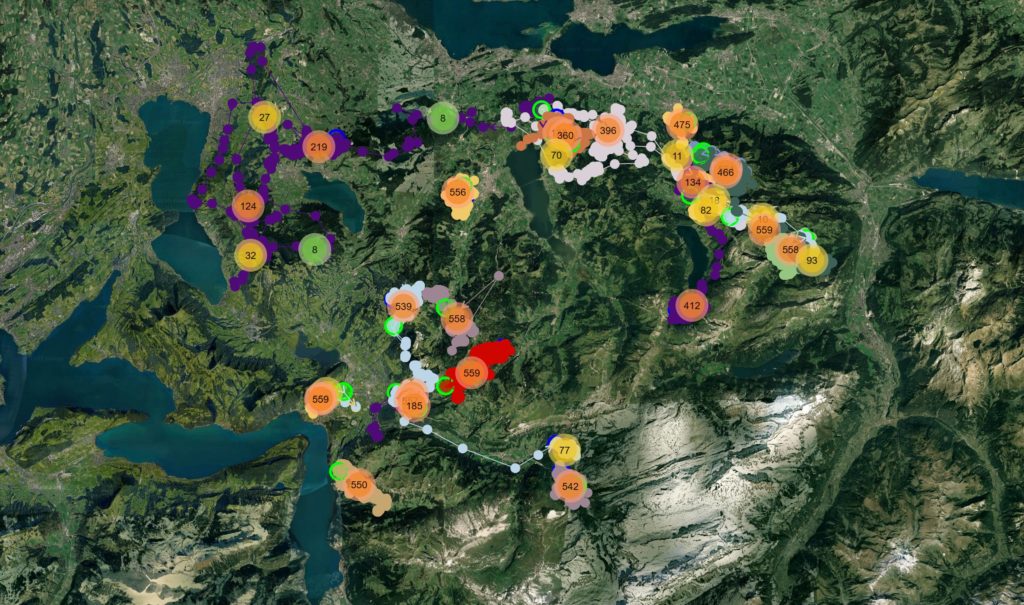Around 1850, the red deer was considered extinct in Switzerland, but already towards the end of the 19th century, the first individuals immigrated again from Austria. Red deer were also actively introduced in various cantons, including the canton of Schwyz. Today, the red deer recolonizes almost the entire Swiss Alpine region, as well as parts of the Central Plateau and the Jura. As a mixed grazer, the red deer feeds on grasses and herbs on the one hand, but also on buds, twigs or bark of shrubs and trees on the other. In order to cover its food requirements, it undertakes seasonal migrations from – usually higher – grazing-rich areas in summer to climatically more favorable locations in winter. Due to the limited area of suitable winter stands, high red deer densities can result in some places. In such stands, the red deer can strongly influence forest development by browsing or shearing damage, which leads to conflicts, especially in protection forests, but also in commercial forests.
While the estimated red deer population in the canton of Schwyz remained constant in the range of about 500 animals from 1990 to 2010, in the past years about 500 red deer have been shot, which means that a strong increase in the population can be assumed. This also intensifies the forest-game conflict in the canton. Damage to the forest can increase and as a consequence higher shooting numbers are demanded. This conflict can be countered with effective red deer management. This requires the most accurate data possible on the regional population of red deer as well as their distribution and use of space. This is the only way to develop strategies adapted to the regional population and to identify and protect intensively used stands. In order to complete the picture of the situation of the red deer in the canton of Schwyz, detailed information on space use and seasonal migrations will now be collected with the help of GPS collars.

Red deer in the canton of Schwyz is fitted with a GPS collar transmitter.

Locations and migration routes of red deer.
GPS data collection simultaneously pursues several objectives:
• Information on space-time behavior and habitat use
• Further development of population survey methods
• Prevention of wildlife accidents on transport infrastructures
